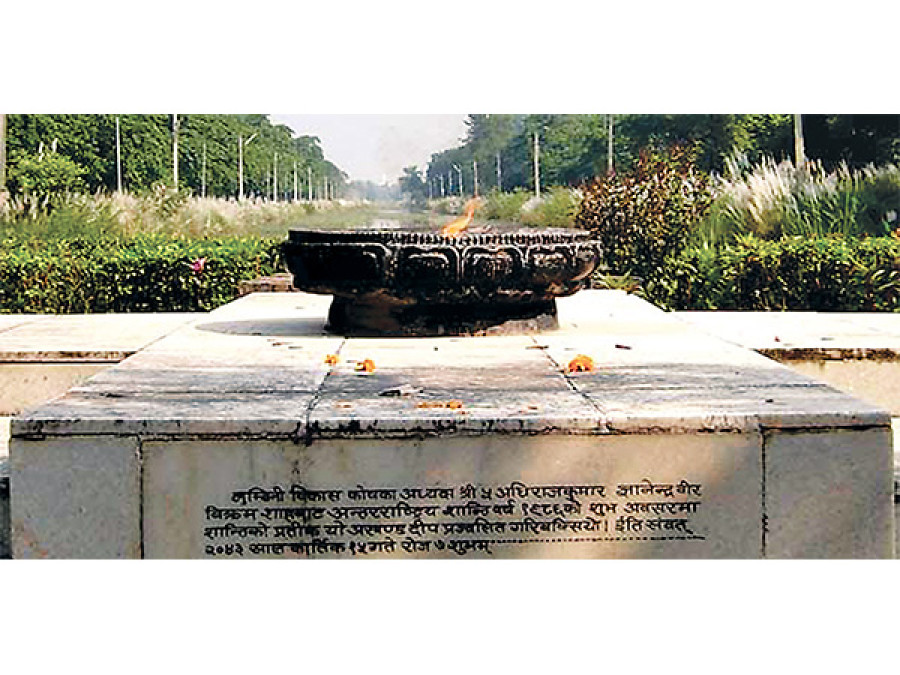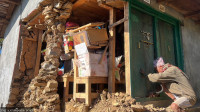Opinion
Buddhism on tour
Nepali and Indian governments must invest in infrastructure development along the proposed Buddhist circuit
Hari Man Lama
Pilgrimages are among the oldest forms of tourism, especially amongst Buddhist and Hindu devotees. People travel far and wide not only within the territories of their homeland but also beyond borders, depending on their faith. In this context, it is interesting that Buddhism and Hinduism stand together in ways of paying homage to both Hindu and Buddhist deities, with only slight differences. Many Hindus shrines double as Buddhist shrines and vice-versa. Hindus go to the Buddhist monasteries and Buddhists to Hindu temples.
The advent of Buddhism as a religion is attributed to be an improvement over Hinduism due to the conservative attitudes of the latter’s preachers. However, one hardly undermines the value and ideals of the other. Both Hindu gods and the Buddha are often installed in the same temple and worshiped by the same priest. This is evident in Kathmandu’s Pashupatinath temple, in Halesi Mahadevsthan in Khotang district, and in the Muktinath temple in Mustang district. Located in the heart of Kathmandu, worship at the Mahankal and Sankata temples takes place in both Hindu and Buddhist styles.
Modi’s push
Though reiterated by quite a few world leaders, Indian premier Narendra Modi has been playing an instrumental role in advocating for Buddhism, as displayed through his speeches in spreading the message of lord Buddha as an apostle of world peace and the need to translate the Buddha’s ideals into practice. That he expressed a desire to visit Lumbini during his official visit to Nepal is also self-explanatory. His discourses demand making different Buddhist shrines in Nepal and India accessible to all interested in paying homage. Therefore, there is an opportunity to develop such areas as a ‘Buddhist circuit’ with connectivity amongst the Buddha’s birthplace in Lumbini, India’s Bodha Gaya where the Buddha attained enlightenment, Sarnath where he gave his first sermons, and Kushinagar, where he passed into Mahaparinirbana.
This idea for a Buddhist circuit has been enthusiastically taken up by different circles, particularly tourism entrepreneurs, following the remarks of India’s Foreign Minister, Sushma Swaraj, during her sojourn to Nepal to attend the 18th Saarc Summit, that Modi’s trip to Lumbini had not been cancelled, but only postponed. News coverage by Nepali, Indian, and international media on Modi’s potential visit will highlight the importance of Lumbini and add further impetus to the development of a Buddhist Circuit.
Developing the circuit
Nepal’s Lumbini has been always a centre of devotional attraction for millions, especially Buddhist followers, as this was where Lord Buddha was born more than 2,500 years ago. Though born to a noble family, he sacrificed all luxuries and left for India’s Bodha Gaya in pursuit of knowledge, peace, and tranquility. After long meditation, he attained Enlightenment, which was followed by his first sermons in India’s Sarnath. Again, it was in Kushinagar of India that Buddha passed into Mahaparinirvana. In the words of the Buddha himself, as told to his disciple Ananda, “After I am no more, O Ananda, men of belief will visit the four places with faith, curiosity, and devotion.” Thus, the importance of Nepal’s Lumbini and India’s Bodha Gaya, Sarnath and Kushinagar are interwoven and need interconnectivity in terms of infrastructure such as roads, railways, domestic and international air links, and accommodations.
Buddhist devotees during their sojourn to such holy places in India and Nepal need to ensure that they receive the required comfort and are safe in terms of travel and accommodations. To this end, joint effort from both Nepali and Indian governments in developing required infrastructures will promote religious tourism in both these countries, which is a prerequisite to turn the presently troubled world towards a peaceful one.
Lama is a tourism entrepreneur




 13.12°C Kathmandu
13.12°C Kathmandu










